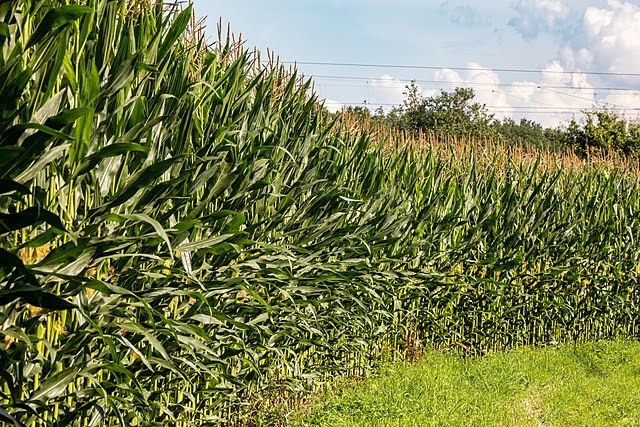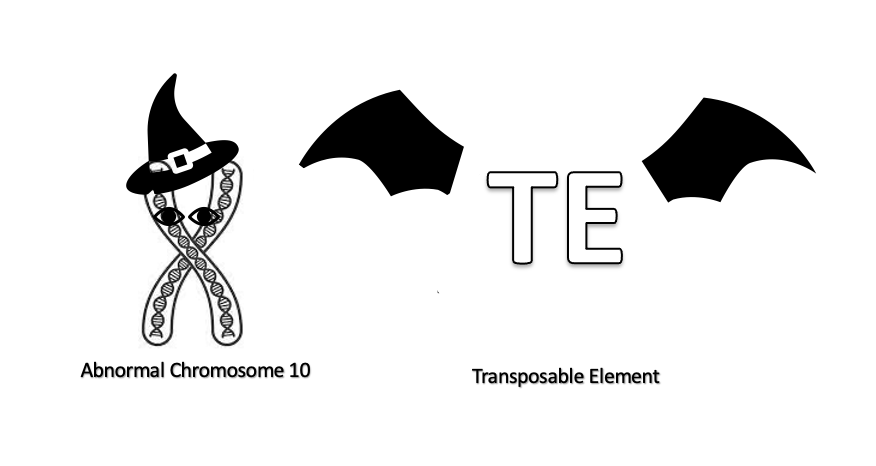It’s the spooky season and we’re all anticipating monsters crawling out from under our bed, but did you know that there are monsters living inside our very cells! Every living thing has DNA in its cells. It provides the “blue print†for what that living thing is going to be. There can't be any monsters hiding in our DNA, right, since it IS us?

I hate to be the bearer of bad news, but some DNA is just plain selfish. It's out to make as many copies of itself, little selfish babies if you will, and it doesn't care what the consequences are. Selfish DNA is like a microscopic monster that has been looking out only for itself within the blueprint of nearly every living thing for milenia.
Selfish DNA:
We've all seen the trick-or-treater who dumps the whole bowl of candy into their pillow case when the sign clearly says “please take oneâ€. Nobody likes them, but it's near impossible to stop them. All of the trick or treaters would be better off if everyone took only one piece, but the selfish trick-or-treater was only worried about the size of their own haul.
Selfish DNA cheats the genome in a similar way to how a selfish trick-or-treater cheats all the other kids on the street. It wants to be passed to the next generation, like a trick-or-treater wants candy, and it doesn't care how it affects the organism as a whole. Sometimes selfish DNA can make an organism sicker, but other times they don't have much of an effect at all.
Selfish DNA has been running amuck in the genomes of everything from humans to plants, likely for as long as life has existed, but nobody really knows. My research focuses on selfish DNA in corn so lets start there!
Abnormal Chromosome 10
Abnormal chromosome 10 is a HUGE addition to the corn genome, accounting for an approximately 3% increase in genome size, and it is as selfish as they come. It gets passed to the next generation 10-20% more frequently than non selfish parts of the genome. But it isn't just causing itself to get passed on too much, it also causes ~30 other special parts of the corn genome to get passed to the next generation more often than they are supposed to. These special parts are attached to genes which get dragged along with the special regions more than they are supposed to as well. That means that abnormal chromosome 10 has been manipulating what genes and what morph of a gene (think blue and brown eyes) make it to the next generation over the last 12 million years that corn and its ancestors have existed.
This is incredibly important because the genes that make it to the next generation most frequently over hundreds of generations eventually become the norm in the global population. The genes that got passed down the most over the last 12 million years are, for the most part, the ones that make up corn as we know it today. Without abnormal chromosome 10, the corn that we eat today could be something totally different.

Transposable Elements
Transposable elements, or jumping genes, are another type of selfish DNA. Unlike the massive Abnormal Chromosome 10, transposable elements are short little segments of DNA that copy and paste themselves throughout the genome. Sometimes they jump into a spot in the genome that doesn't matter and you'd never be able to tell they did it. However, sometimes they jump into the middle of important genes which causes the gene to malfunction. In humans, a transposable element jumping into an important gene has caused hemophilia, immune deficiencies, and alstrom syndrome.
However, transposable elements can also be co-opted by the genome to do something useful. For example, in corn a transposable element was responsible for one of the important changes that turned the wild ancestor of corn into what we eat today.
Conclusion
Selfish DNA acts like a monster within the very code that makes up almost all organisms. Your DNA and the DNA of almost all living things isn't all harmoniously working to make the healthiest whatever-you-are possible. Some parts are just out for themselves.
About the Author
Meghan Brady is a genetics Ph.D. student whose research focuses on selfish genetic elements in maize. She is passionate about increasing diversity equity and inclusion in STEM fields. When outside of the lab she enjoys hiking and tending her many house plants. You can contact Meghan at meghan.brady@uga.edu.
- Meghan Bradyhttps://athensscienceobserver.com/author/meghan-brady/November 17, 2022
- Meghan Bradyhttps://athensscienceobserver.com/author/meghan-brady/
- Meghan Bradyhttps://athensscienceobserver.com/author/meghan-brady/









